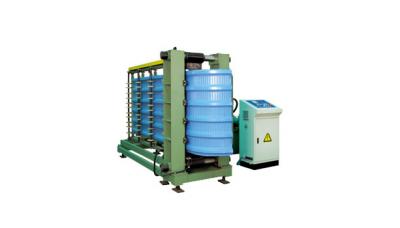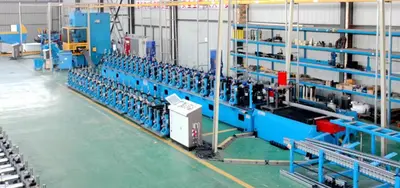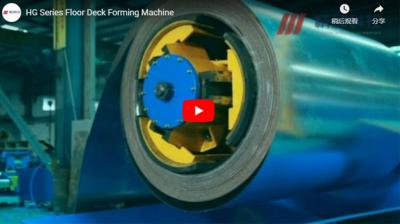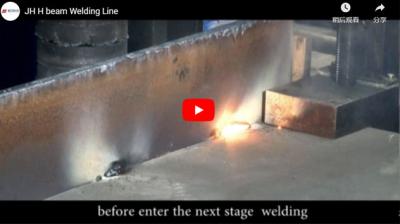How Polyurethane Sandwich Panel Production Line Works
The polyurethane sandwich panel production line mainly includes three parts: a profiling machine, a foaming machine, and a laminating machine. During production, the steel coil is uncoiled, profiled by the profiling machine, and then cut. The bottom plate, top plate, and four-wall lamination mechanism are manually arranged to form a closed body. The roof mechanism then compresses it, and the PU foaming machine injects the foam to form the shape. While two panels are being foamed and cured on-site, two other panels are loaded and unloaded, thus achieving continuous production.
The laminating machine includes a double-belt hydraulic control system and a roof group. Each board type is equipped with 4 sets of aluminum edge sealing blocks (to cooperate with the upper and lower wall panels to form a sealed space, processed according to different board types). The thermal air temperature system can speed up the solidification and curing time of the PU foam, resulting in better molding effects.
The non-continuous polyurethane sandwich panel laminating machine is usually 6 meters long, and the longest can reach up to 12 meters. The daily output (8 hours) is about 300 square meters. The width of the steel plate is 800-1200 mm, the composite panel thickness is 50-250 mm, and the total power is about 220 kW.
The Advantages of the Polyurethane Sandwich Panel Production Line
The main feature of this machine is that it has a relatively smaller size compared to the continuous polyurethane sandwich panel production line. It is economically priced, has flexible panel sizes, and is suitable for producing specially designed panels and low output requirements. It is more suitable for constructing polyurethane color steel sandwich panels for cold storage buildings.
The continuous production line for rigid foam plastic aluminum foil sandwich panels produces panels with embossed aluminum foil on the upper and lower layers, and a flame-retardant polyurethane or polyisocyanurate core. The sandwich panel specifications are thickness 20-150 mm, width 1200 mm, and length can be customized. The product is mainly used for external wall insulation. The polyurethane sandwich panel production line can also produce other soft-surfaced sandwich insulation boards.
The Working Principle of the Polyurethane Sandwich Panel Production Line
The rigid foam plastic raw liquid is measured and pumped into the mixing head by the metering pump of the pouring machine, then evenly poured onto the bottom surface material of the sandwich panel. Together with the upper surface material, it is sent into the laminating conveyor. The foam solidifies and forms between the upper and lower chain plates of the laminating conveyor.
The solidified sandwich panels are then edge-trimmed and automatically tracked and cut into the required length. The polyurethane sandwich panel production line consists of an embossing unit, two sets of unwinding devices, a set of aluminum foil preheating devices, a foaming machine, a mobile pouring machine, a side paper pasting device, a laminating conveyor, a hot air circulation device, an edge trimming device, an automatic tracking cutting machine, and roller racks.
This equipment is used to produce PU insulation boards and has been recognized by users. It has been widely used in steel structure factory buildings, housing, supermarkets, and public places.
The production process of PU insulation boards is similar to that of phenolic insulation boards. The foaming methods and material components are different, and their application range in the external wall insulation system varies.


 CN
CN
 EN
EN
 fr
fr  de
de  es
es  it
it  ru
ru  pt
pt  ar
ar  th
th  pl
pl  ro
ro 







 Call us on:
Call us on:  Email Us:
Email Us:  #1809, Jianhu Rd, Keqiao, Shaoxing, Zhejiang, China
#1809, Jianhu Rd, Keqiao, Shaoxing, Zhejiang, China 